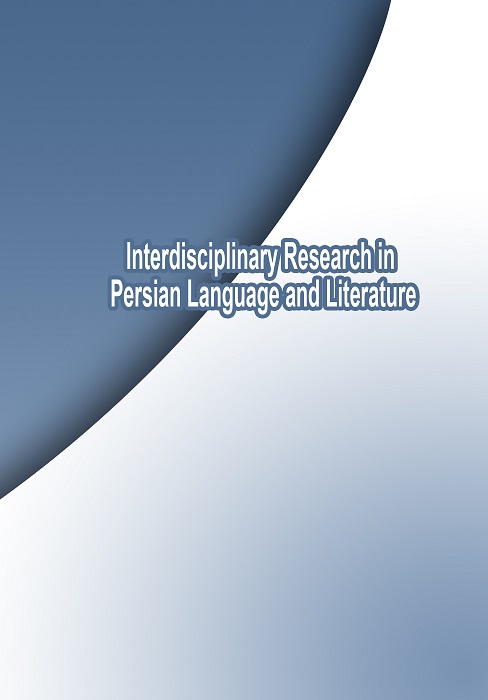Anthropological study of mythological beliefs in post-burial rituals in Sanjābi tribe of Kermanshah
Document Type : Research Paper
Author
Associate Professor of Persian Language and Literature at Hakim Sabzevari University
Abstract
People's view of death and its special rites and ceremonies in different cultures reveal many intellectual and cultural infrastructures of different peoples, which can be studied and analyzed from different perspectives. One of these viewpoints is the mythological analysis of various rituals related to death from the moment of death to burial and after burial in various cultures and ethnic groups. In this essay, the author has investigated and analyzed the mythology of four post-burial rituals in Kermanshah province using descriptive-analytical method as well asfield study. Since holding rituals among nomads and villagers is more serious than urban residents, the main focus in the interviews was on the nomads and tribes of Kermanshah, including the Sanjābi tribe. The studied rituals are: breaking a jar or pottery at dawn on the first day after burial, planting a tree, especially a cypress, on the grave of the deceased, asking for a good look from the deceased by offering sacrifice, and holding a Nū Ayd ceremony. The result of the research shows that the roots of these rituals are linked to mythological thoughts in ancient Iran. The ritual of breaking a jar or pottery is related to the magic of transferring evil and destruction, Planting a tree on a grave, in connection with the mythological thoughts about trees, is a ritual seeking a good look and concern for the deceased's emotions with the belief in forohers and its ceremonies, and the ritual of Nū Ayd is a repetition of the Zoroastrian Nowruz porseh.
Keywords
- Eliade, Mircha and others (2000), World of Mythology, translated by Jalal
Sattari, first edition, Tehran: Markaz.
- Blokbashi, Ali (2008), living in one's own culture and looking at other
cultures, Tehran: Golazin.
- Boyce, Mary (1995), History of Zoroastrian Religion, translated by
Homayoun Sanetizadeh, Tehran: Toos.
- Beyhaqi, Hossein Ali (1986), research and survey of Iranian public culture,
Mashhad: Astan Quds Razavi.
- Parnian, Musa (1995), Kurdish Public Culture (Kermanshah), Master's
Thesis, Allameh Tabatabai University, Faculty of Persian Literature and
Foreign Languages.
- Jahoda, Gustav (1992), Psychology of superstitions and calamities,
translated by Mohammad Taghi Brahni, Tehran: Alborz.
- Khushali, Behzad (2000), Kurdish Linguistics and History of Kurdistan, first
edition, Hamedan: Fanavaran.
- Zulfiqari, Hassan (2014), Iran's public language and literature, Tehran: Samt.
- Rokhzadi, Ali (2011), Kurdish phonetics and grammar, second edition,
Sanandaj: Kurdistan.
- Shavalieh, Jean and Alan Gerbran (2000), The Culture of Symbols, translated
by Sudaba Fazali, Tehran: Jihoon.
- Samadi, Mehrangiz (1998), The Moon in Iran from the earliest days to the
rise of Islam, Tehran: Scientific and Cultural.
- Askari Khanqah, Asghar (1999), General Anthropology, Tehran: Samt.
170 / جمشیدی، زهرا/ مطالع ۀ مردمشناختی باورهای اساطیری در آیینهای پس از تدفین در ایل سنجاب ی کرمانشاه
- Ferdowsi, Abulqasem (1990), Shahnameh, second book, by the efforts of
Jalal Khaleghi Mutlaq, California: Mazda.
- Ferdowsi, Abulqasem (2007), Shahnameh, book two, by the efforts of Jalal
Khaleghi Mutlaq, Tehran: Big Islamic Encyclopedia.
- Frazer, James George (2012), The Golden Branch: A Study in Magic and
Religion, translated by Kazem Firouzmand, 7th edition, Tehran: Aghah.
- Mahjoub, Mohammad Jaafar (2007), Folk literature of Iran (a collection of
articles on legends and customs of Iranian people), edited by Hassan
Zulfiqari, third edition, Tehran: Cheshme.
- Mardukh Kurdistani, Muhammad (No date), History of Mardukh, Volume 1,
No place: Army Printing House.
- Warner, Rex (2008), Encyclopaedia of Mythology of the World, translated
by Abulqasem Esmailpour, Tehran: Astoureh.
- Yashta (2002), Ebrahim Pordawood, Vol. 1 and 2, Tehran: Asatir.
- Articles:
- Barzegar, Ebrahim, (2008), "History, Essence and Founding Philosophy of
Interdisciplinary Sciences", Quarterly Journal of Interdisciplinary Studies in
Human Sciences, Year 1, Number 1, pp. 37-56.
- Blokbashi, Ali (1967), "chahar shanbeh soori", Art and People, Volume 5,
Number 54, pp. 2-6.
- Panahi Semnani, Hossein (2000), "Popular Culture and Popular Culture",
Knowledge and People, Year 1, Number 2, pp. 62-75.
- Pourkhaleqi Chatroudi, Mahdekht (2010), "The Tree of Life and its Cultural
and Symbolic Values in Beliefs", Iranian Studies, Number 1, Period 1, pp.
126-89.
- Rezaei, Mohammad Hossein; Sengbergan, Mohsen and Garajian, Imran
(1400), "Burial traditions in Zoroastrianism, the continuation of the long
tradition of secondary burial in the Paleolithic and Neolithic period",
Archaeological Studies, Volume 13, Number 2, pp. 248-270.
- Savina, and Ai (2010), "Names of ethnic groups in the geography of Iran",
translated by Hossein Mostafavi Guru, Farhangistan Letter, Volume 5,
Number 2, pp. 165-182.
- Sayari, Saeeda and Faramarz Qaramalki, Ahad, (2009), "Interdisciplinary
Studies: Basics and Approaches", Islamic Philosophy and Theology
Magazine, 43rd year, 2nd issue, pp. 59-82.
- Sadaqa, Jan (1999), "The Tree in Ancient Mythology", translated by
Mohammad Reza Turki, Poetry, No. 26, pp. 140-145.
- Abbasi Demshahri, Rahmatullah (2008), "Introduction to the Burial Ritual in
Minab", Golpang, Year 7, Number 2, pp. 7-15.
دوفصلنامۀ پژوهش های میان رشتهای زبان و ادبیات فارسی، سال سوم، دورۀ جدید، شمارۀ اول ، بهار و تابستان،۱4۰3،ص153-171 / 171
- Kanjuri, Ahmed; Zulfiqari, Hassan (2022), "Analysis of artistic, literary,
ritual and mythological dimensions of Chamri", Iranian Studies, Volume 21,
Number 41, pp. 531-495.
- Mazdapour, Ketayoun (2013), "Continuity of ancient customs in
contemporary Zoroastrian customs in Iran" Farhang magazine, Linguistics
special, No. 49 and 50, pp. 147-179.
- Nadia Tavousi, Mahmoud (2007), "Death and related rituals in ancient Iran",
Farhangistan Letter, Volume 10, Number 3, pp. 150-168.
Volume 3, Issue 1
April 2024Pages 153-171
- Receive Date: 12 August 2024
- Revise Date: 07 October 2024
- Accept Date: 22 December 2024
